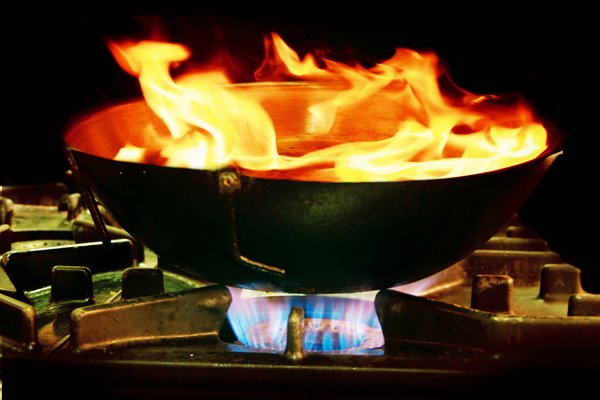DIY: How to Split Atoms In Your Kitchen

A Swedish man named Richard Handl was arrested in late July for "trying to split atoms in his kitchen," as several media outlets put it. According to Handl's blog, the 31-year-old chemistry hobbyist obtained samples of radium, americium and uranium and was trying to set up a makeshift nuclear reactor on his stove.
Handl apparently didn't know that his DIY activity was illegal. He wasn't caught until he sent a question to Sweden's Radiation Authority and was answered in the form of a police visit.
Inquiring minds want to know: How did he get those chemicals? And if left to his own devices, could Richard Handl really have split atoms in his kitchen?
Kent Hansen, professor emeritus of nuclear science and engineering at the Massachusetts Institute of Technology, thinks not. "My guess is that this is a tempest in a teapot," Hansen said, referring to the media storm surrounding Handl's arrest rather than what the Swede may have been brewing on his stovetop.
First off, Handl didn't have the right raw materials, according to Tom Ewing, a nuclear scientist at Argonne National Laboratory, outside Chicago. "As best I can tell … he only possessed minute amounts of radioactive materials: radium from old watch hands (from antique devices purchased on eBay) used in the old days to make dials 'glow' at night, americium used in trace amounts as an ionizing source in ordinary smoke detectors you buy at hardware stores, and depleted uranium (who knows where he obtained this)," Ewing said by email. [7 Everyday Toxic Things You Shouldn't Toss in the Trash]
None of those were going to work. Radium doesn't fission, or split when bombarded with neutrons. To make americium work, you need a complex nuclear reactor, and depleted uranium contains scant amounts of the right variety for nuclear fission: U-235.
The vast majority of uranium in nature is another kind, U-238. "To make a reactor you have to separate out U-235 from U-238, but to do that you need something the size of centrifuges or fusion points," MIT's Hansen told Life's Little Mysteries, a sister site to LiveScience. "These are enormous industrial facilities. There's no way someone could do it in their kitchen." [How Is Uranium Enriched?]
Sign up for the Live Science daily newsletter now
Get the world’s most fascinating discoveries delivered straight to your inbox.
Ewing pointed out that the difficulty in enriching uranium is why so few nations have the ability to make fuel reactors. "Not a thing that you can do in your kitchen!" he wrote.
In short, Handl probably didn't have the right materials to set off a fission reaction. But what if he — or you — did? How could you get them to react?
Let's pretend you have access to pure U-235. "To make it fission, you need neutrons," Hansen said. Because your kitchen doesn't include a nuclear reactor, which uses something called a moderator to bring neutrons into contact with uranium, your only option is to pack together a critical mass of the stuff.
"You could bring together enough nuclear material to make a critical mass so that the neutrons from fission would produce more fission and sustain the reaction," Hansen said. "To do that you need a sphere of pure U-235 a foot across."
So just pack a wok full of U-235. It'll cook on its own.
There's one little problem: "If anyone had that much and tried to bring it together, they would kill themselves," Hansen said. "It will fizzle, not make an explosion, but it will produce enough radiation to kill you."
This article was provided by Life's Little Mysteries, a sister site to LiveScience. Follow us on Twitter @llmysteries, then join us on Facebook. Follow Natalie Wolchover on Twitter @nattyover.
Natalie Wolchover was a staff writer for Live Science from 2010 to 2012 and is currently a senior physics writer and editor for Quanta Magazine. She holds a bachelor's degree in physics from Tufts University and has studied physics at the University of California, Berkeley. Along with the staff of Quanta, Wolchover won the 2022 Pulitzer Prize for explanatory writing for her work on the building of the James Webb Space Telescope. Her work has also appeared in the The Best American Science and Nature Writing and The Best Writing on Mathematics, Nature, The New Yorker and Popular Science. She was the 2016 winner of the Evert Clark/Seth Payne Award, an annual prize for young science journalists, as well as the winner of the 2017 Science Communication Award for the American Institute of Physics.










